sap training institutes in vijayawada | sap coaching near me

ultimate technologies is a one of the best software training institute in vijayawada.we give software courses like c, c++, java,selenium, python, django framework, sap, fico, hr, mm,sd, abap,aws,devops, tally with gst,digital marketing modules seo,sem,smo,smm,content marketing,affiliate marketing with high quality in afforadable cost. who want to learn software ourses come and see to join.

SAP is the world leader in enterprise applications in terms of software and software-related service revenue. Based on market capitalization, it is the world’s third largest independent software manufacturer supporting all sizes of industries helping them to operate profitability, grow sustainably and stay ahead of the competition in the market.
SAP is known worldwide for its unique innovations that help the customers run their business with high efficiency. Some of its facts and figures stand as follows −
More than 263,000 customers in 188 countries.
More than 68,800 employees in more than 130 countries.
Annual revenue (IFRS) of €1682 billion.
Listed under the symbol "SAP" on stock exchanges, including the Frankfurt Exchange and NYSE.
SAP is a market leader in providing ERP (Enterprise Resource and Planning) solutions and services. In this chapter, we will try to understand more on ERP and where it should be used. In addition, we will learn the implementation techniques of ERP along with the ERP packages available in the market.
Enterprise Resource Planning (ERP) is a software that is built to organizations belonging to different industrial sectors, regardless of their size and strength.
The ERP package is designed to support and integrate almost every functional area of a business process such as procurement of goods and services, sale and distribution, finance, accountings, human resource, manufacturing, production planning, logistics & warehouse management.
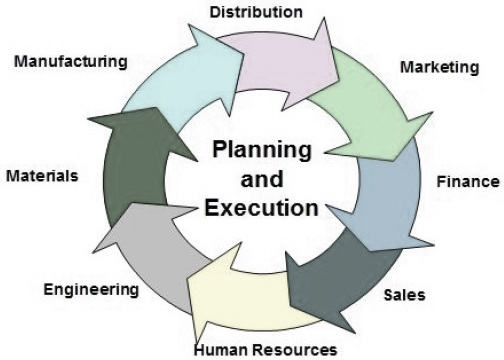
Every business, regardless of the industry they belong to, require connected systems with efficient information flow from one business process to another. Business Process Integration (BPI) plays an important role in overcoming integrating challenges that allows organizations to connect systems internally and externally.
Business Process Integration (BPI) allows −
The following illustration shows an overview of various business processes running in an enterprise and how they are integrated.
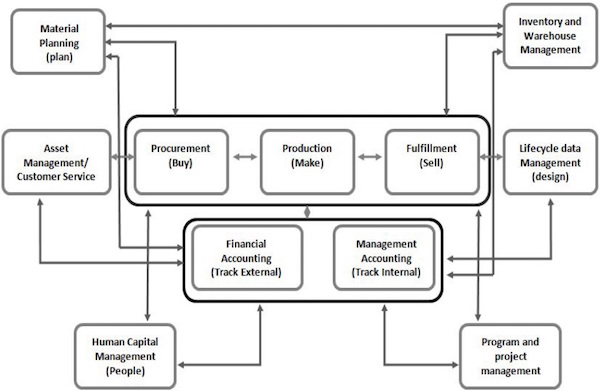
During early phases of development, integrated solutions were designed for particular process areas such as −
However none of the integrated systems came with a complete solution for an organization covering major business process areas. In early 1990’s, the Gartner Group first used the acronym ERP. By mid–1990’s, ERP systems addressed all the core enterprise functions.
SAP solutions include a number of functional modules, which support transactions to execute key business processes, such as −
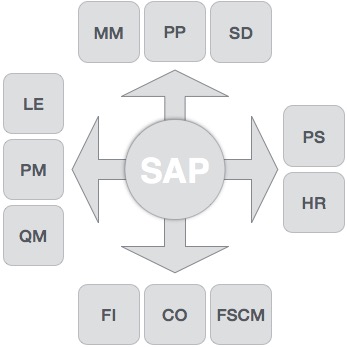
SAP FICO is a combination of two ERP modules, i.e., Finance Accounting (FI) and Controlling (CO). Under Finance in SAP and at an enterprise level, the following modules take part −
SAP FI (Financial Accounting) is accountable for tracking the flow of financial data across the organization in a controlled manner and integrating all the information for effective strategic decision-making.
Creation of Organizational Structure (Defining Company, Company Codes, business Areas, Functional Areas, Credit Control, Assignment of Company Codes to Credit Controls)
Financial Accounting Global Settings (Maintenance of Fiscal Year, Posting Periods, defining Document types, posting keys, Number ranges for documents)
General Ledger Accounting (Creation of Chart of Accounts, Account groups, defining data transfer rules, creation of General Ledger Account)
Tax Configuration & Creation and Maintenance of House of Banks
Account Payables (Creation of Vendor Master data and vendor-related finance attributes like account groups and payment terms)
Account Receivables (Creation of Customer Master data and customer-related finance attributes like account groups and payment terms
Asset Accounting
Integration with SD and MM
SAP CO (Controlling) module facilitates coordinating, monitoring, and optimizing all the processes in an organization. It controls the business flow in an organization. This module helps in analyzing the actual figures with the planned data and in planning business strategies.
Two kinds of elements are managed in CO −
These elements are stored in the FI module.
Cost Element Accounting (Overview of the costs and revenues that occur in an organization)
Cost Center Accounting
Activity-Based-Accounting (Analyzes cross-departmental business processes)
Internal Orders
Product Cost Controlling (Calculates the costs that occur during the manufacture of a product or provision of a service)
Profitability Analysis (Analyzes the profit or loss of an organization by individual market segments)
Profit Center Accounting (Evaluates the profit or loss of individual, independent areas within an organization)
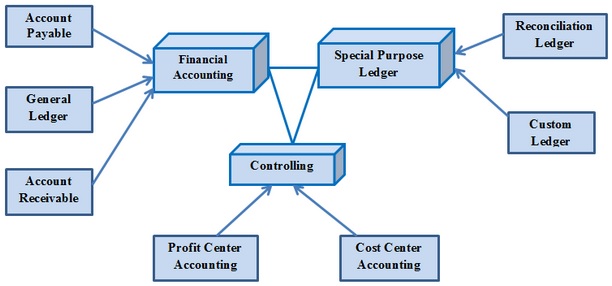
SAP SD is one of the most important modules in SAP. It has a high level of integration complexity. SAP SD is used by organizations to support sales and distribution activities of products and services, starting from enquiry to order and then ending with delivery.
SAP SD can monitor a plethora of activities that take place in an organization such as products enquires, quotation (pre-sales activities), placing order, pricing, scheduling deliveries (sales activity), picking, packing, goods issue, shipment of products to customers, delivery of products and billings.
In all these processes, multiple modules are involved such as FI (Finance Accounting), CO (Controlling), MM (Material Management), PP (Production Planning), LE (Logistics Execution), etc., which shows the complexity of the integration involved.
Setting up Organization Structure (creation of new company, company codes, sales organization, distribution channels, divisions, business area, plants, sales area, maintaining sales offices, storage location)
Assigning Organizational Units (Assignment of individual components created in the above activities with each other according to design like company code to company, sales organization to company code, distribution channel to sales organization, etc.)
Defining Pricing Components (Defining condition tables, condition types, condition sequences)
Setting up sales document types, billing types, and tax-related components
Setting up Customer master data records and configuration
Material Management deals with movement of materials via other modules like logistics, supply chain management, sales and delivery, warehouse management, production and planning.
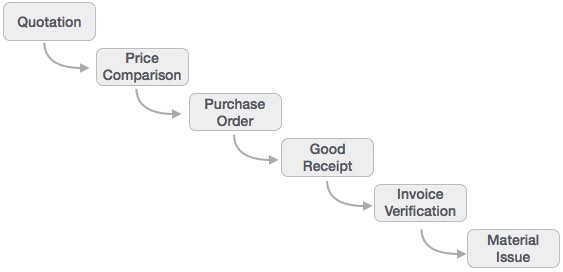
Logistic Execution can be divided into two sub-modules, i.e., shipment of goods (purchase to procurement process) and warehouse management (storage of goods). These two modules are integrated with sale and distribution, material management, and production and planning.
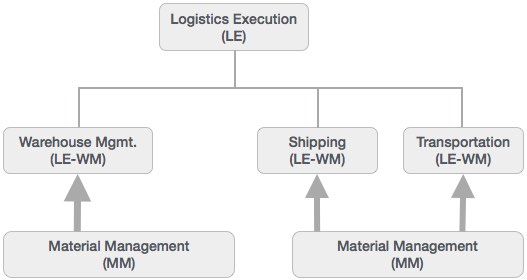
As the name SRM suggests, this module deals with the effective and efficient transition of products and services between an organization and its suppliers. The main process covered in this section is procurement of products like direct materials, indirect materials, and services. This module can effectively integrate with planning, accounting, and inventory system.
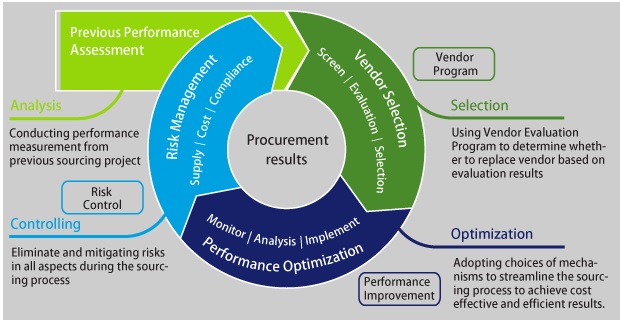
End-to-End Procurement Cycle
Procurement process with SAP Enterprise Buyer comprises of the following major steps −
CRM deals with end-to-end customer related processes. CRM is designed to centralize the data related to all the customers associated with an organization. It helps an organization −
Maintain its sales, services, and build marketing strategies according the market demand and customer data analysis.
Remain focused on its customers and via information analysis, help the business to know more about its customers.
Improve sales and services and building better relationships with customers.
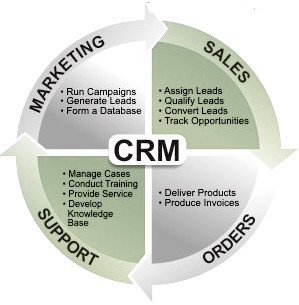
The most important objective of master data administration in Human Resources is to enter employee-related data for administrative, time-recording, and payroll purposes.
A new employee can be hired without using Recruitment. Instead you can hire someone by running a personnel action in Personnel Administration, thereby creating the necessary data for the employee to be hired.
Employee data must be kept current. After an employee is hired, circumstances can always arise which necessitate either the entry of new data or the correction of current data. For instance −
An employee moves to his or her new address must be stored in the system.
An employee gets a pay hike at the start of the year. The new salary must be stored for the relevant date.
An employee changes jobs within the organization. His or her organizational assignment, working time, and salary also change.
Data can be stored for the past, present, or future.
Note − Entering payroll-relevant data in the past triggers retroactive accounting.
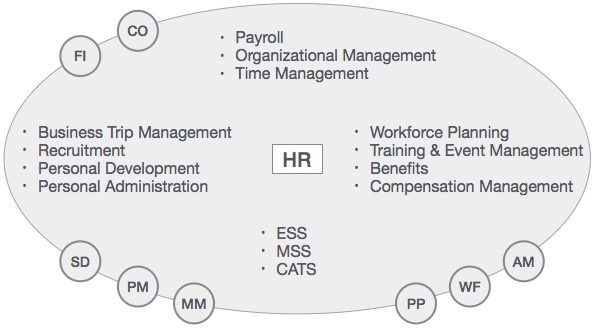
The HR module is comprised of major areas of functionality known as sub-modules. The HR module is a true demonstration of the strength of the SAP product in Enterprise Resource Planning.
The HR system has very strong integration points (where data is passed back and forth without human intervention) with just about all of the other SAP modules. In addition, there is very tight integration amongst the HR sub-modules.
The above illustration highlights some of the basic SAP HR terms as listed below.
Comments
Post a Comment